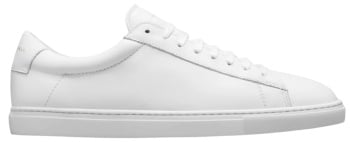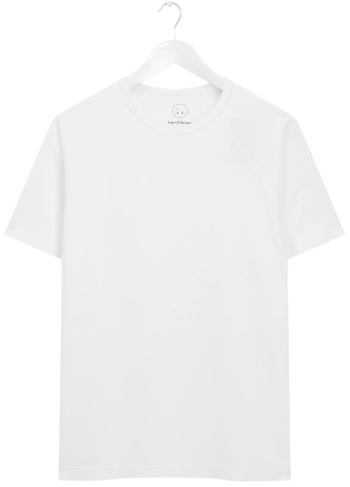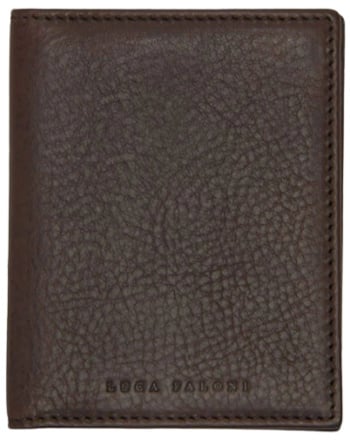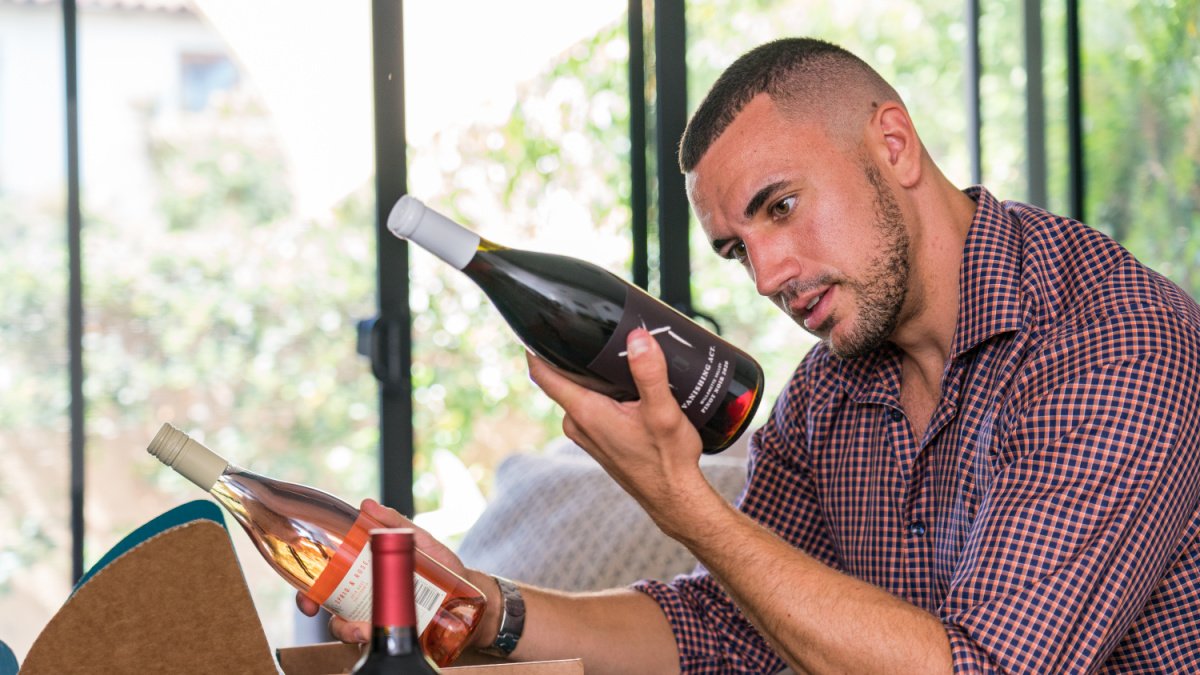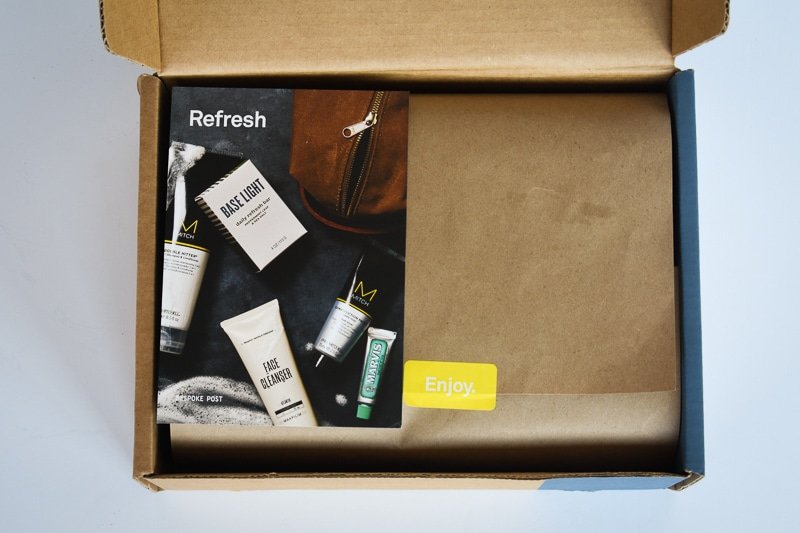Guys, the moment of truth.
It’s Friday evening.
You and your ravishing date are ushered into a ritzy, bustling, dimly-lit restaurant and shown to your table. Your date opens the leatherbound wine list written in curvy, barely legible 9-point font with prices ranging from $28 to $280.
She hands it over to you and asks, “will you pick out a bottle for us?”
It pays to know a thing or two about vino. It’s one of the most ubiquitously sipped beverages around the globe—and if you pick the right bottles, one of the tastiest too.
In this article, I’ll give you a starting point and a quick list of simple but effective resources to get your wine bearings.
Skip Ahead
What You’ll Need to Start Understanding Wine

From basics and fundamentals to learning how to read a bottle and wine subscriptions, I’ll discuss all the essential resources you need to gain an understanding of wine without breaking the bank and without sounding like a 5th grader yammering about a juice box full of grape juice.
To start, you’ll want to pick up a few decent wine glasses. Wine glasses are relatively cheap and can be purchased online or at any home goods store.
As you continue learning about wine, it’s nice to store all your newfound knowledge in one place. Consider getting a journal or notebook to scribble wine info into or simply dedicate a digital note on your phone you can reference.
There’s plenty of apps for tracking your favorite wines too. My favorite is Vivino, which lets you save and rate wines and interact with wine-drinking friends.
Take these wine fundamentals to heart and dive into a few of the resources I’ve listed and you’ll be able to start talking about wine and dare I say, even enjoying it, sooner than you might think.
Wine 101: Basics and Fundamentals

How old is wine, you ask?
So old that 20 miles south of Tbilisi, Georgia, an international team of archaeologists discovered that the people who once lived there were making wine on a large scale since around 6,000 B.C. An era in which prehistoric humans were still using stone and bone tools.
Wine Body & Popular Types
Ever heard someone say a wine is “light-bodied” or “full-bodied” before? The body of a wine refers to how thick and substantial a wine feels in your mouth and actually has nothing to do with the flavor, which is a common misconception.
Lighter wines will have an airy and buoyant texture, and be easier to swish around in your mouth. Fuller-bodied wines will feel thicker, richer, and more robust. Medium and full-bodied wines have higher alcohol percentages than lighter ones too. Most wines sit at around 12% alcohol, which is still quite a bit higher than your favorite IPA.
Globally, the 6 most popular grapes used to produce wine are:
Whites
- Riesling (light-bodied)
- Sauvignon Blanc (medium-bodied)
- Chardonnay (full-bodied)
Reds
- Pinot Noir (light-bodied)
- Merlot (medium-bodied)
- Cabernet Sauvignon (full-bodied)
Get familiar with these, you’ll spot them atop simple wine lists at bars and restaurants and at eye-level in grocery and liquor stores.
Varietals, Blends, Tannins, & Flavors
Wine “varietals” are the names of single grapes used to produce a bottle of wine. A bottle of Zinfandel is made with Zinfandel grapes, a bottle of Malbec is made using only Malbec grapes, and so forth.
A “blend” means exactly how it sounds, a blend of various grape varietals used in the same bottle. One beloved blend that is commonly abbreviated by waiters, sommeliers, and on menus is Grenache, Syrah, Mourvedre (GSM). In blends, you can typically find out the breakdown of percentages of each varietal on the back of the bottle.
Now, let’s talk about tannins because tannins are a critical component of wine, and let’s face it, it’s a pretty damn sweet word to toss around in casual conversation too.
Tannins are naturally occurring compounds found in the skin, seeds, and stems of grapes. Tannins can also come from wine that’s aged in oak. While tannins appear in lots of different wine varieties, white and rosé wines will have much fewer tannins than reds.
Tannins are responsible for the drying sensation often experienced with drinking red wine. It can feel like all the saliva and wetness has magically disappeared from your mouth after sipping a tannic wine.
But don’t confuse tannins with acidity. As we just learned, tannins come from the skin, seeds, and stems of grapes. Acidity comes from the juicy pulp of grapes.
In terms of flavors, tannins will offer a bitter flavor and acidity will be more tart, tangy, and literally acidic.
This can be pretty confusing, so one simple way to recognize the difference is that tannins will leave your mouth feeling dry and acidity will leave your mouth feeling wet and salivating. Together, they create complexity and balance in a bottle of wine.
How to Read a Wine Bottle
Maybe a lot of us guys haven’t dived into the world of wine because the labels on the bottles look like cryptic French messages from the Renaissance era.
Though, once you can learn how to dissect the elements of a wine label, you can make informed decisions on which bottles to purchase.
Cue Cedric Nicaise.
Nicaise is the wine director at Eleven Madison Park, a 3-star Michelin restaurant in New York City that was named the World’s Best Restaurant in 2017 by the World’s 50 Best Guide.
In this 2-minute video, Nicaise breaks down how to read a wine label, including the vintage, producer, varietal, and other key information.
Try Starting with a Wine Subscription
If you want to learn more about wine without racking your brain or your schedule trying to learn more about wine, Bright Cellars is a tremendous solution.
You can read loads of articles and descriptions about soft, velvety notes and tannins, but you won’t begin recognizing any of the delicious flavors in wine until you start drinking it yourself.
Yet, you might feel like every time you cough up $20 for a bottle of wine at the store, you have no idea what it’s going to taste like.
A handful of wine subscription services have popped up on the market claiming to curate and deliver phenomenal wine selections right to your door.
Bright Cellars is drumming up noise as an approachable and affordable option designed for newcomers. The company was founded by two MIT grads who began as a couple of craft beer and cocktail connoisseurs who didn’t know diddly-squat about wine.

So, they founded Bright Cellars and the Bright Points algorithm, which curates wine based on personalized data and flavor profiles.
It all happens in a matter of minutes. You fill out a zippy 7-question quiz to identify common flavors you prefer over others. Then, the algorithm crunches the data and generates four bottles of wine from Bright Cellar’s repertoire to ship your way at $20 per bottle. You can also opt for six bottles.
The case of neatly wrapped bottles shows up at your door with a pamphlet called “Wine Wisdom” along with fact cards that give you each wine’s flavor profile and key information.

If you want a turn-key solution to quickly learning about and drinking good wines, Bright Cellars is a great bet. You’ll get to taste a worldly selection of wines on a monthly basis and at a consistent price point.
I gave Bright Cellars a whirl for one month and received a case of four bottles based on my flavor profile. It was nice to try wines I’ve never had before and the learning aspect made drinking the wines much more enjoyable.
If you want to learn more about wine without racking your brain or your schedule trying to learn more about wine, Bright Cellars is a tremendous solution.
Get to Tasting and Asking Questions
Now, I’m certainly not a sommelier, but I was a bartender once who worked under a sommelier down at this coastal seafood joint, and I can tell you that on the rainier days when no customers came in, I’d pick his brain about our wine list.
I drink a good amount of wine—particularly reds—and while I’ve still only shaved the tip of the iceberg in terms of wine knowledge, I can navigate my way through a wine shop and recognize a number of varietals that I know for certain I enjoy drinking.
Now, I’m not suggesting you hurl a wrench into your current career path and suddenly apply to become a bartender, but it’s not a bad idea to do a search for local wineries, wine shops, or wine tastings near you.
Some of the best knowledge I’ve gained is by paying for a cheap wine flight, asking a couple of bone-headed questions, then sitting back and listening intently to my server while they launch into a detailed monologue about the fermentation process, flavors, notes, and styles of each wine I’m drinking.
My point is to piggyback off of others who know more about wine than you. Sign up for a local tasting, sit at the bar of a local bistro and open the wine list, ask friends what types of wines are their favorites and bring a bottle over for you both to share.
Wining Things Up
Gents, are you feeling confident enough to pick out a decent bottle of wine yet? I hope so. You now know the 6 most popular wine varietals, a thing or two about wine body, tannins, and acidity, and how to properly read a wine label.
Once you’re familiar with a couple of varietals you know you like, drinking wine is a truly pleasurable experience and one you can share while out on a date, at a casual gathering or happy hour, or at the dinner table with family and friends.
Wine is complex, delicious, and universal. It pairs well with food or by itself and will continue to be a dominant cultural currency across the globe for generations to come. Because of all that, the modern gentleman stands to know a thing or two about it.
If you want to learn more about wine without racking your brain or your schedule trying to learn more about wine, Bright Cellars is a tremendous solution.
FAQs
What kind of wine is good for men?
From a health perspective, many studies have shown that red wine is good for a man’s health due to the antioxidants found in red wine. From a flavor perspective, men can drink any type of wine from red to white to rosé. The 3 most popular red wine varietals are Pinot Noir, Merlot, and Cabernet Sauvignon.
What is a masculine wine?
Typically, fuller-bodied wines with more tannins, intense flavors, and a higher alcohol percentage are considered to be more masculine wines. Syrah, Tempranillo, Cabernet Sauvignon, Burgundy, and Malbec all have some of these traits.
Do guys like to drink wine?
Drinking wine is entirely subjective. While some guys prefer to drink beer or cocktails, it’s worth dipping a toe into the world of wines considering how ubiquitous the drink is around the globe. Guys who haven’t drunk wine should try a few varietals and see what they like.





